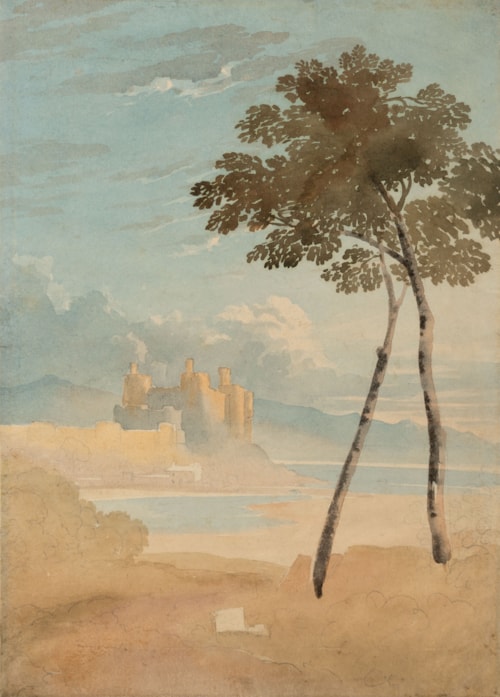
John VARLEY
London 1778 - London 1842
Biography
Born in the inner London borough of Hackney, John Varley was apprenticed to a silversmith at the age of thirteen, having been forbidden by his father to train as a painter. Following the death of his father a few months later, however, and with the support of his mother, Varley was able to pursue a career as an artist. In 1798 he exhibited his work for the first time, at the Royal Academy. Not long afterwards he became one of the group of young artists, including Thomas Girtin and J. M. W. Turner, who met regularly at the home of the physician and collector Thomas Monro, who also introduced Varley to a number of other collectors. It was around the turn of the century that Varley began to take on students and develop a reputation as a fine teacher; among his pupils were Anthony Vandyke Copley Fielding, William Henry Hunt, John Linnell and William Turner of Oxford. In 1804 Varley was one of the founding members of the Society of Painters in Water-Colours (later known as the Old Water-Colour Society), and he exhibited numerous works there every year between 1805 and 1842, as well as posthumously in 1843. In 1815 he published his influential book A Treatise on the Principles of Landscape, and his work was to have a profound influence on such later watercolourists as John Sell Cotman, David Cox and Peter de Wint. Varley’s reputation lasted well after his death; in their A Century of Painters of the English School, first published in 1866, Richard and Samuel Redgrave described the artist as ‘a perfect master of the rules of composition.’


